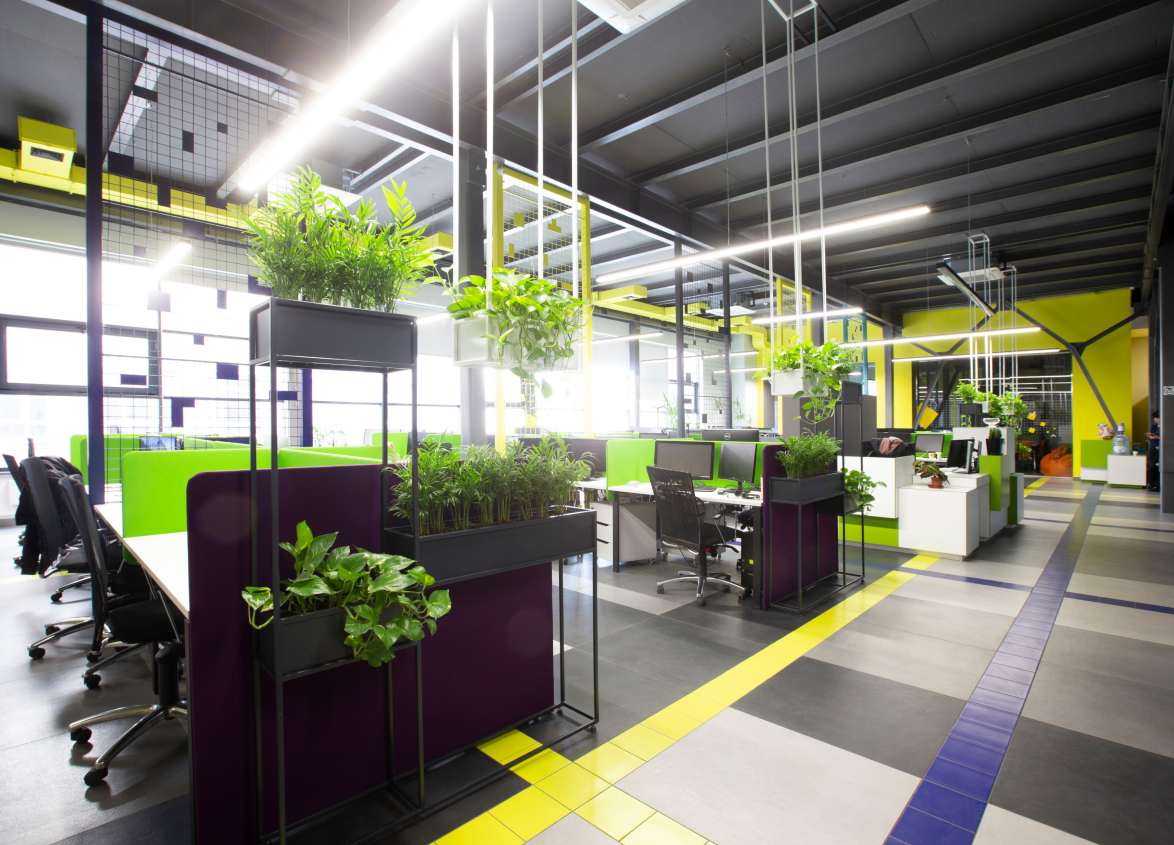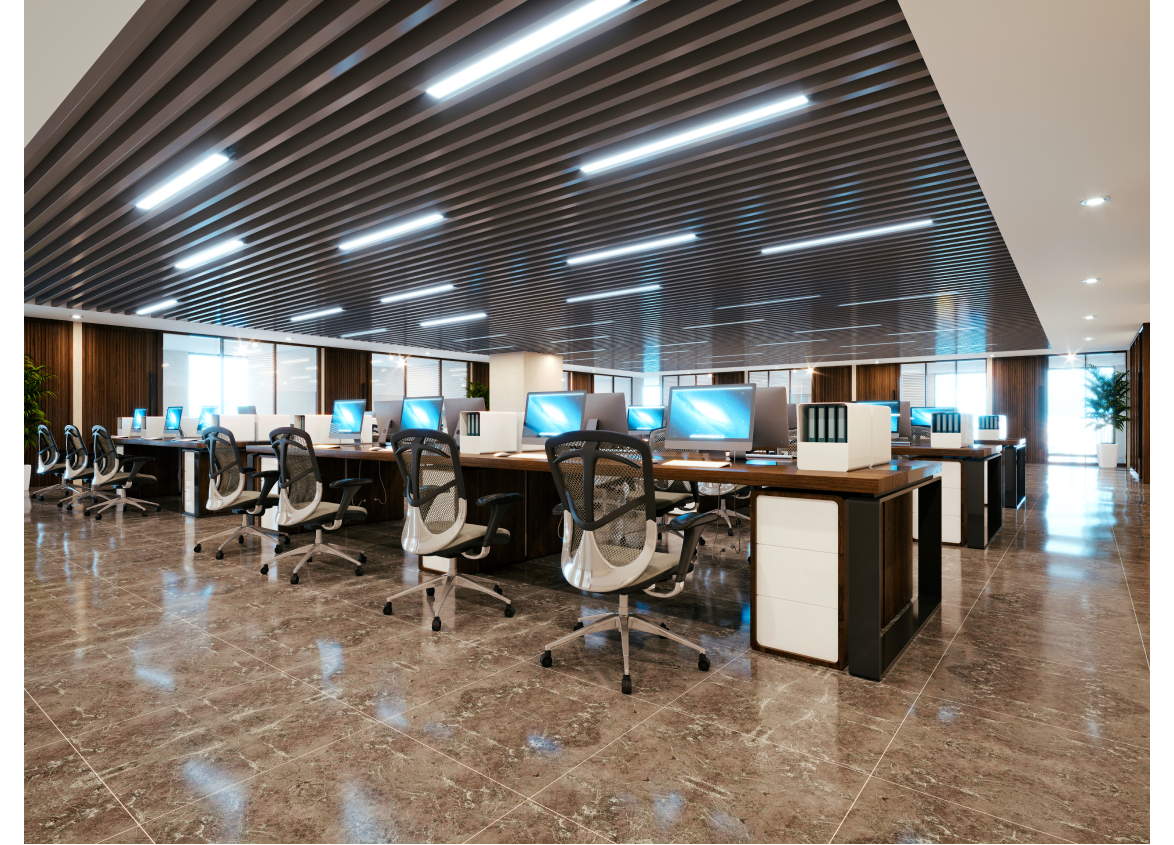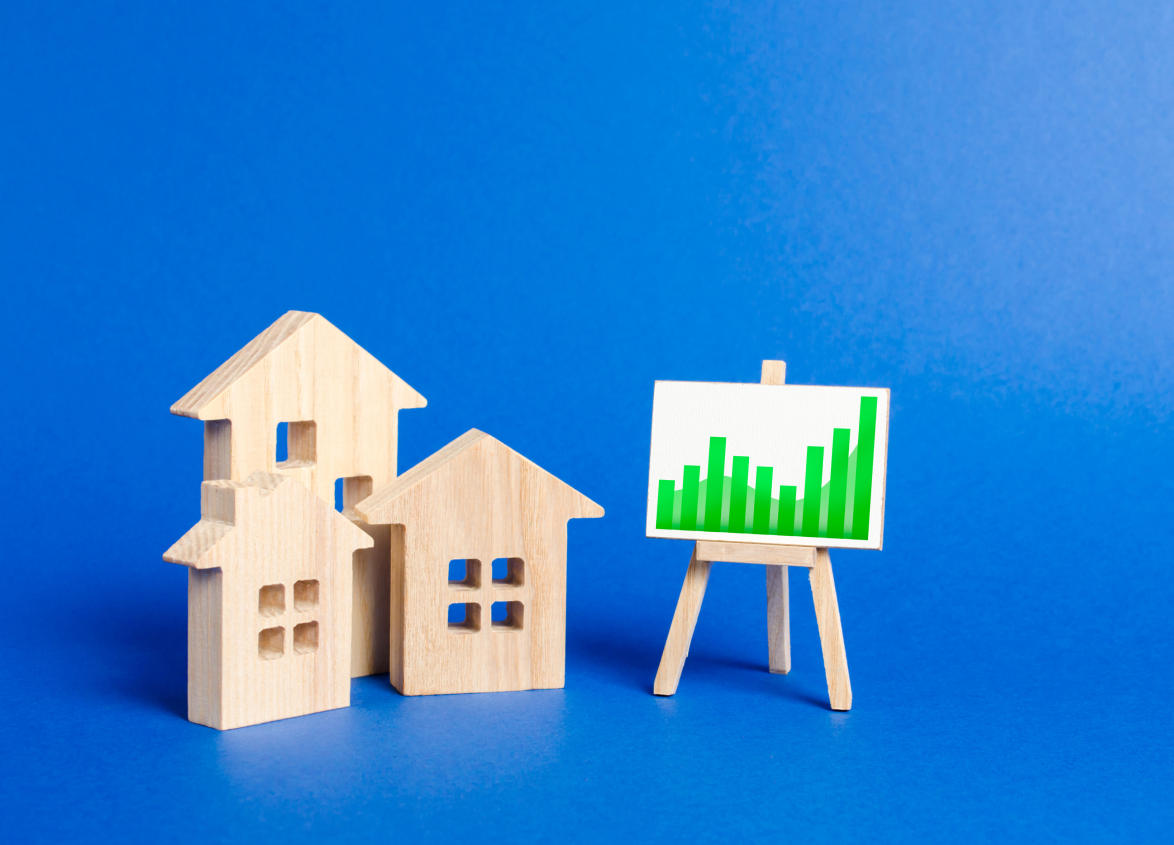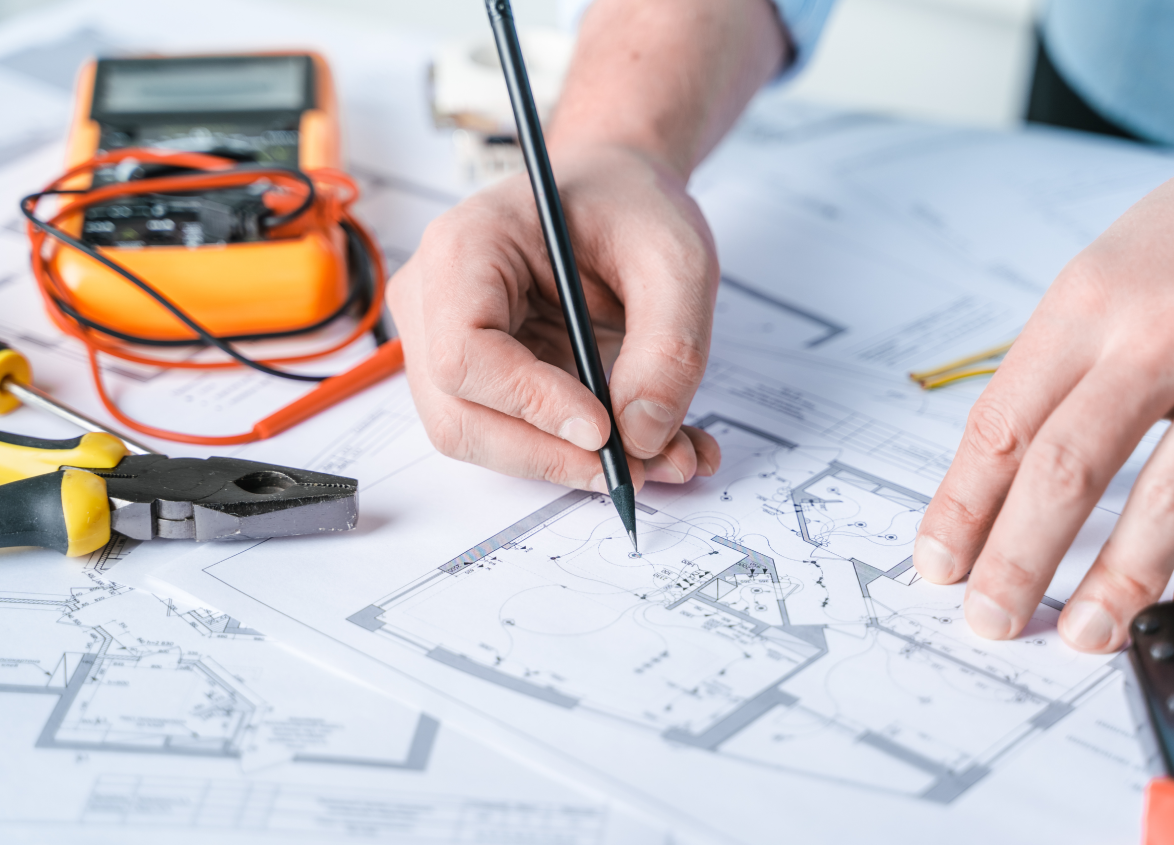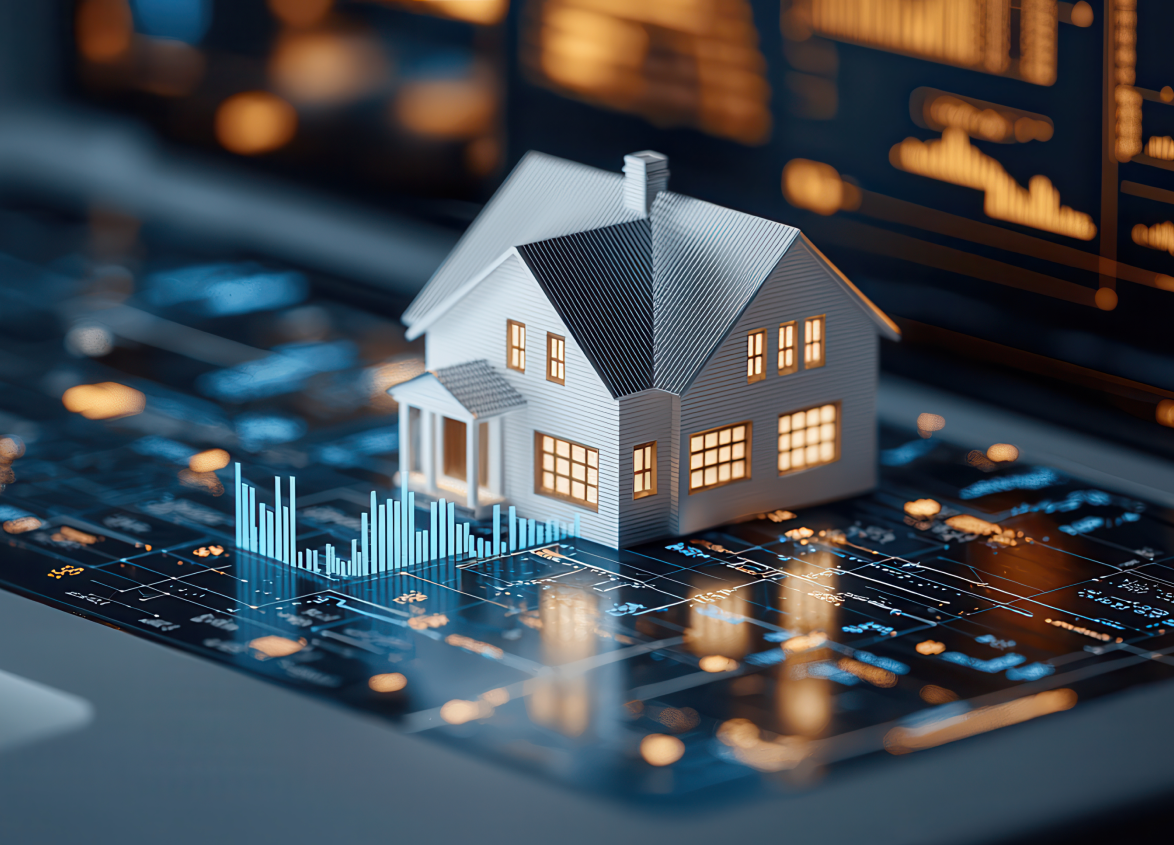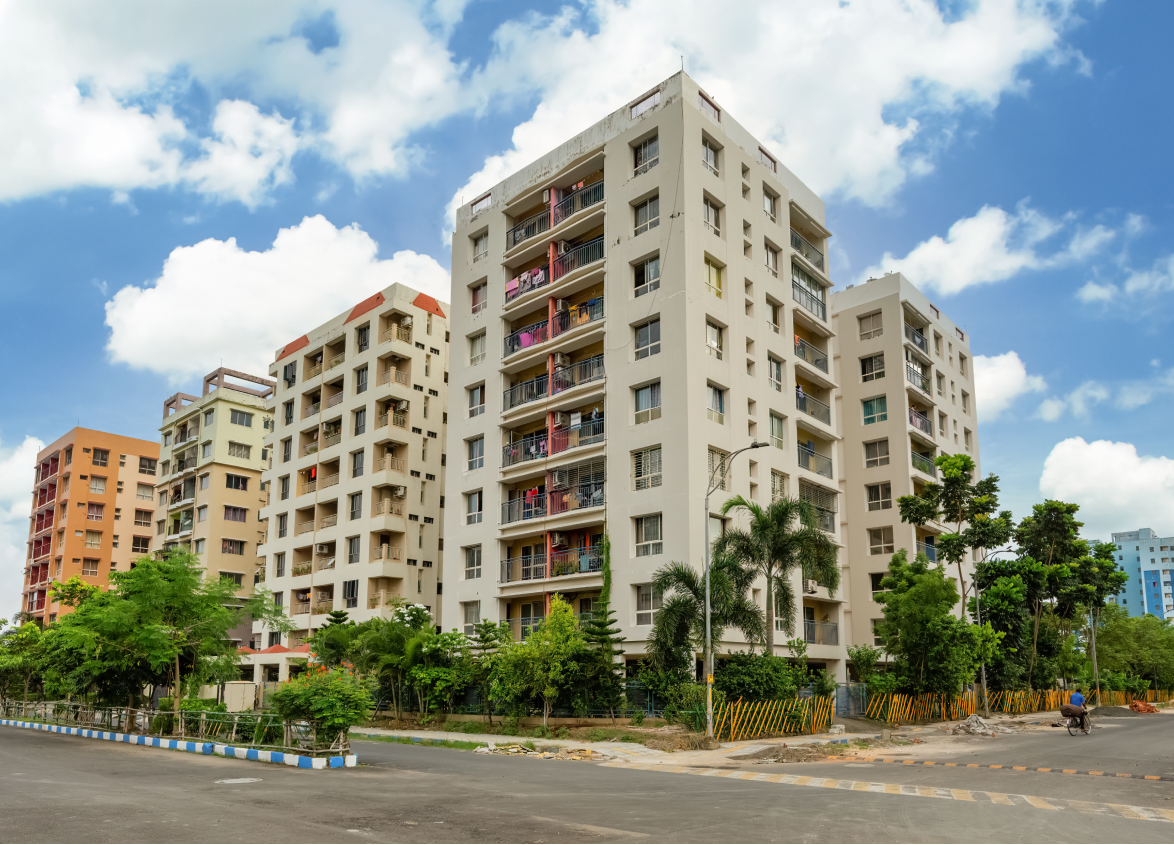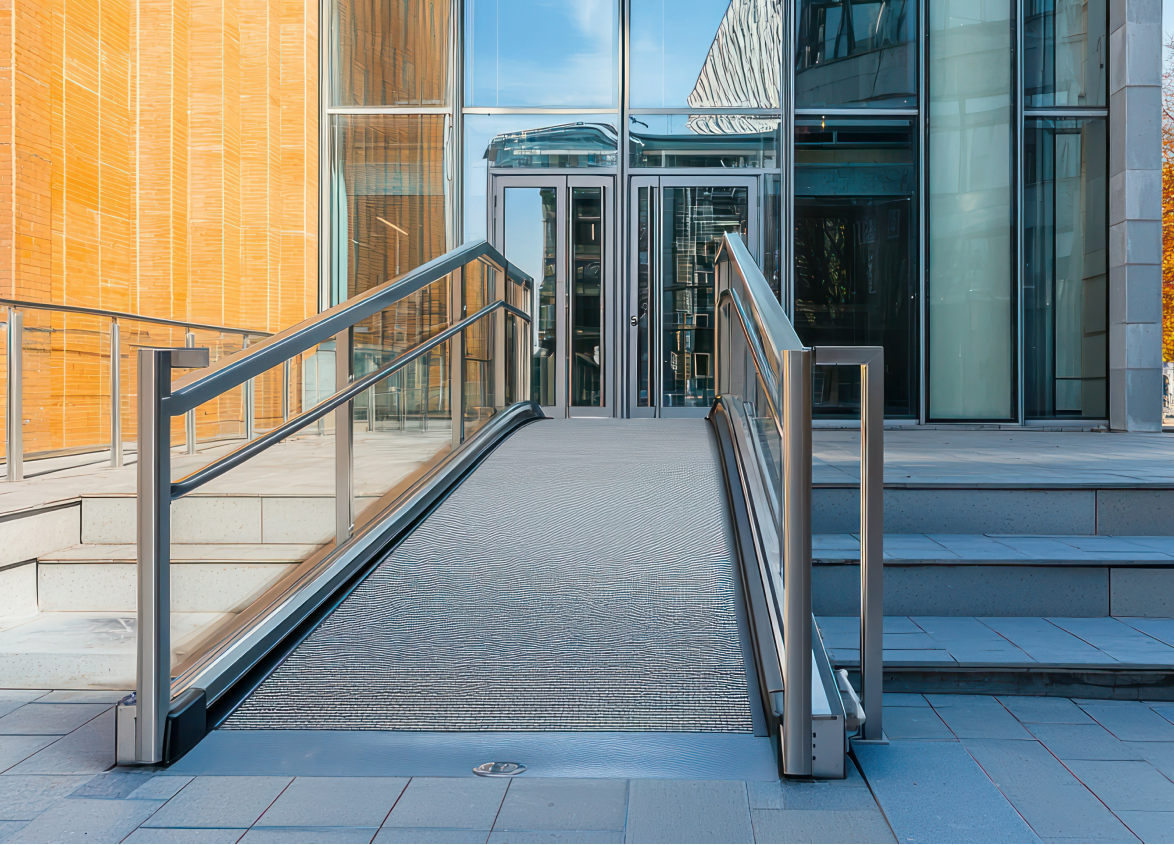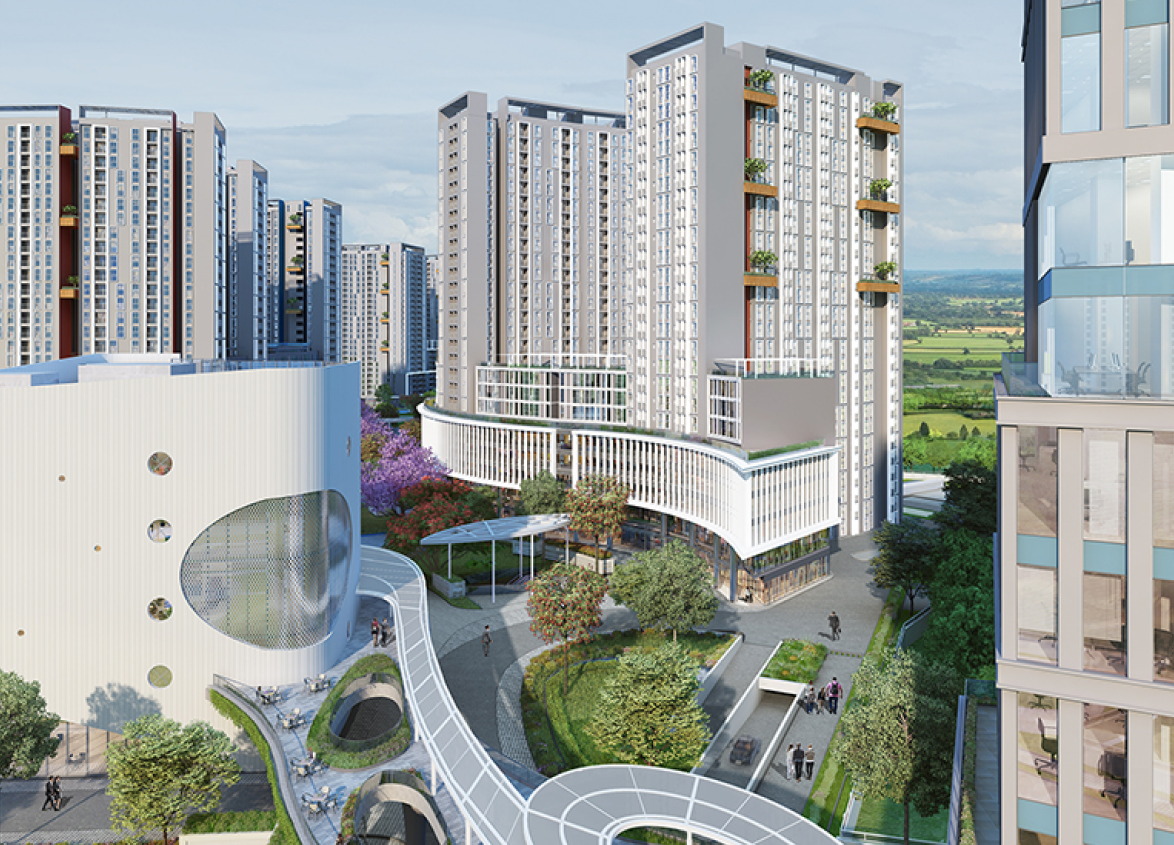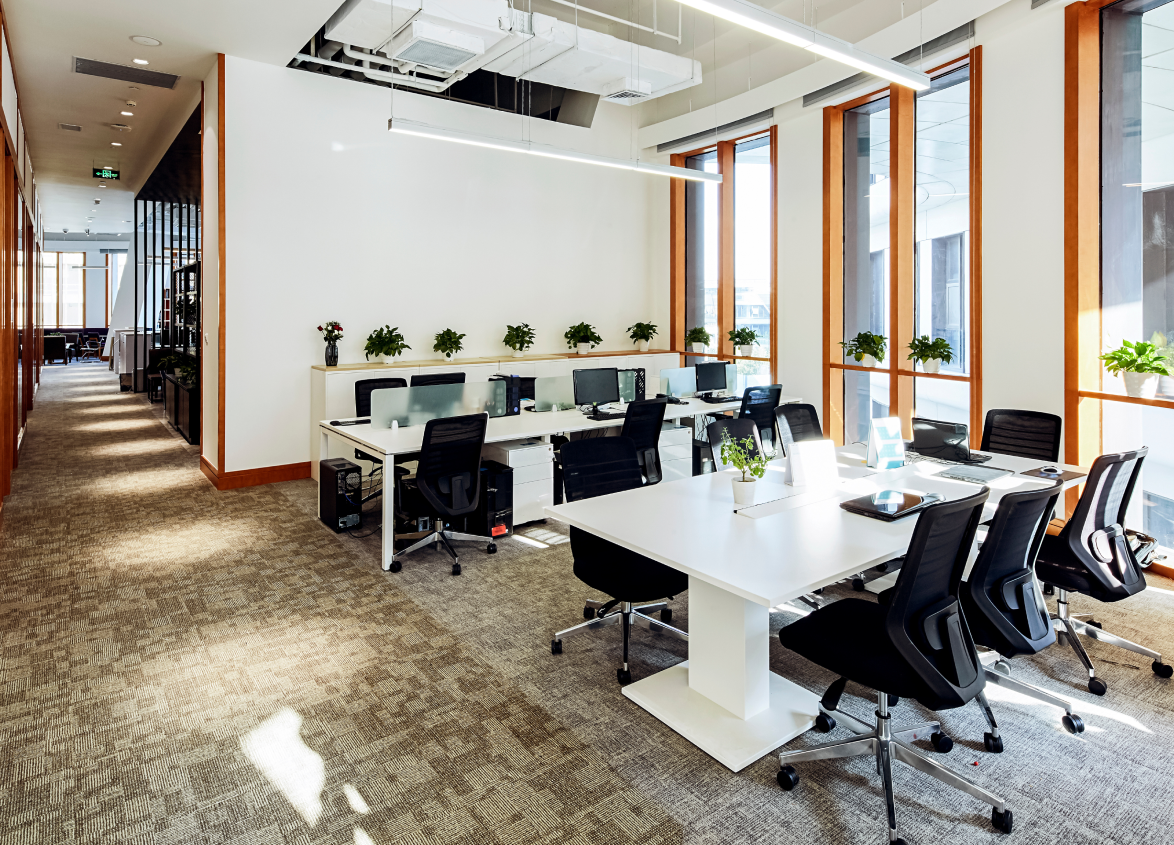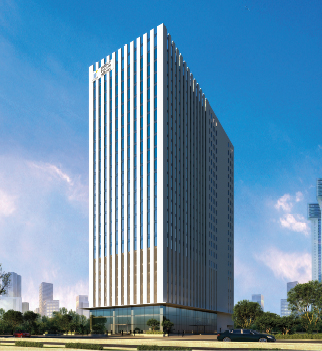
Commercial
How Smart Office Technology is Revolutionizing Workspaces
February 04, 2025
Introduction
The trendy commercial office has changed potently within the last years. The organisations are slowly turning away from those ancient cubicles and moving towards places of collaboration and innovation to work more productively. Smart offices are the epitome of this global trend.
It is transforming traditional office spaces into workspaces using several integrating technologies, such as IoT, AI, and software tools, to increase employee productivity, resource optimisation and collaboration.
This blog post deals with various ways in which innovative technology transforms workspaces and opens potential for the future of work in every industry.
Understanding Smart Office Technology
Intelligent office technology incorporates various digitalised devices and software to manage, monitor and automate operations in the workspace using associated systems and other devices. The hardware encompasses sensors with smart lighting and automated HVAC systems, all supplemented with software solutions, such as cloud computing, AI-powered analytics and mobile applications.
Types of Smart Office Solutions
Smart office solutions refer to technologies that could optimise productivity, enhance employee experience, and reduce operational costs in the workplace. Such solutions fall into various categories.
| Type | Description |
|---|---|
| Smart Lighting Systems | With the use of IoT sensors and automation, smart lighting solutions are focused on optimising energy use and facilitating personalised lighting environments. |
| Smart Climate Control | These smart thermostats and HVAC systems measure and adjust real-time temperature and air quality. |
| IoT-Enabled Desks and Furniture | Ergonomy-modulated furniture keeps the workplace in optimum condition for a healthy employee. |
| Smart Meeting Rooms | Technology-driven meeting rooms make collaboration seamless for in-office and remote teams. |
| Space Utilization and Occupancy Sensors | These systems provide real-time data on how office spaces are being used. |
| Workflow Automation Tools | Automation platforms streamline repetitive tasks and integrate processes. |
| Unified Communication Platforms | These platforms combine messaging, calls, and file sharing into a single tool. |
| Smart Security Systems | Established innovative security techniques promising safety within the workplace. |
| Energy Management Solutions | IoT-based energy management systems track and optimise power consumption. |
| Cloud-Based Collaboration Tools | Cloud technology enables real-time collaboration, especially for distributed teams. |
The Role of Office Automation in Modern Workspaces
Automation at the office has revolutionised the way for-profit institutions operate by introducing efficiencies and productivity in all the processes carried out therein. When technology is incorporated into daily tasks, modern workspaces achieve an upgraded level of accuracy and consistency. Office automation refers to using hardware and software to execute repetitive tasks in communication with better resource utilisation.
Key Roles of Office Automation
The important change is that office automation is turning traditional workspaces into more efficient use of space and productive surroundings. Technology at work makes most routine operations faster and easier than before, building collaborations with employees and reducing manual effort.
Streamlining Repetitive Tasks
While repetitive activities such as data entry, invoice generation, and report development are automated tools, employees are free to spend that time on strategic and creative activities.
Improving Communication
A flexible email, chat, or video platform encourages employees to maintain their communication with one another, whether to broadcast information from the office or to work remotely.
Enhancing Resource Management
Smart systems optimise the use of office resources like meeting rooms, desks, and equipment, to reduce wastage and maximise efficiency.
Minimising Human Error
Automated processes remove errors during calculation, scheduling and data handling, and increase accuracy and compliance.
Supporting Scalability
Automation solutions are equipped with features which can easily adapt to ever-increasing workloads, hence making it easier for organisations to scale operations without added manual labour.
Enabling Data-Driven Decisions
Real-time analytics and reporting tools are essential for actionable insights into how management can hurry a decision.

Benefits of Office Automation
The modern-day offices have been transformed into an office automation model that incorporates the highly advanced technology into the office work life.
Besides boosting productivity in the organisation, this transition also results in innovations, collaborative efforts, and efficiencies that will further dramatize the introduction of office automation in workplace daily functions. Following are the positive aspects of automation of the office:
Increased Productivity
Time wasted on repetitive and manual tasks such as data entry, invoice generation, and scheduling can be minimised with office automation. Along with achieving goals faster, employees devote their time to more strategic and creative responsibilities to innovatively take the lead. Delays in processes will also be reduced with process automation, allowing the compliance of deadlines.
Cost Savings
Everywhere costs go down is through automating routine procedures. From energy efficiency systems to paperless workflows, it helps to maximise electricity use, reduces money spent on printing, and saves on storage. Also, it prevents possibility, if any, of errors by removing manual processing which causes serious expensive problems like the wrong recording of financials or wrong processing of orders.
Enhanced Accuracy
Human errors could be very expensive in many data-dependent activities. Office automation tools guarantee accuracy for every activity from payroll processing to report generation and inventory management. Such processes not only have operational credibility but also reliability among clients and other stakeholders.
Improved Collaboration
Office cloud tools and communication programs such as Microsoft Teams, Slack, and Zoom keep employees working together no matter where they are. They combine messaging, file sharing, and video conferencing to overcome barriers to effective teamwork in hybrid and remotely arranged groups.
Better Resource Management
Automation optimises the use of office resources such as meeting rooms, desks, and equipment for IT purposes. Smart scheduling systems are good at keeping track of bookings inside rooms while light and climate control sensors will even automate themselves, playing a role based on the occupancy in the building. This way, waste reduces while effective space and utilities use are possible.
Data-Driven Decision-Making
Office automation creates an avenue for accessing real-time analytics and insights from tracking employee performance, energy-measurement variations, and customer behaviour types so that management can draw conclusions and make informed decisions. Moreover, they also remove the manual frightening task of data aggregation.
Scalability
Businesses have difficulty keeping pace with their expanded needs during a time of growth in manual processes. However, any automated system can easily expand with increased workloads without requiring additional manpower. That capability keeps the business agile and competitive.
Increased Satisfaction among Employees
Meaningful and fulfilling tasks can help in the automation of the monotonous work done by the employees. It makes for a better job satisfaction level, taking them away from burnout. It also refers to tools for flexible working that are making up a more balanced work-life schedule.
Security and Compliance
These kinds of automated offices hold the answer for various tools which give better security and compliance with laws. Consider biometric access control, AI in cybersecurity, and automated audit trails here that would really serve to protect sensitive information and keep them away from possible data breaches.
Eco-Friendly Operations
One of them is going simple paperless in the first place and optimising energy usage applications as well as waste minimisation: all of which would further cut costs and take businesses one step towards greener goals.
Essential Office Automation Products
Businesses need to incorporate several tools and technologies addressing different aspects of everyday operations. Office automation includes all the basic products that help achieve the peak productivity, maximum communication, and streamline the management of resources. Following are some of the important office automation products that every modern office should consider:
1. Document Management Systems (DMS)
With document management systems like Google Workspace, Microsoft SharePoint, and Dropbox, businesses can store, manage, and work on documents within the cloud. Such tools ensure very quick access to files, improves version control, and allows teamwork by enabling multiple users to edit and comment on the same document in real time. Changing to a paperless environment saves money because you can take back out space as well as make documents more secure and lower overhead expenses within administration offices.
2. Smart Scheduling Tools
Calendly, Doodle, and Microsoft Outlook are some of the many online tools that help employees schedule efficiently and manage their calendars. These tools eliminate the usual back and forth that can be time-consuming when moving appointments around by allowing others to see some of the availability and select appropriate time slots.
Usually in bigger organisations, they also have integrated Room Management Systems that have included these scheduling tools for live management of their meeting space bookings, ensuring there is optimal use of space.
3. Project Management Software
Applications such as Trello, Asana, Monday.com or Basecamp all come with features that help task management, progress tracking, and collaboration among team members. These are further enhanced with automated task assignments, deadline tracking, and centralised communication. Therefore, all members in a group get to keep themselves organised and focused.
They can send out reminders and notifications and have entries created automatically, all aimed at ensuring that no task falls through the cracks. It increases overall productivity tremendously.
4. Customer Relationship Management (CRM) Systems
This customer relationship management software may include Salesforce, HubSpot, Zoho CRM, etc., and helps a company to manage their customer data as well as automate sales workflows and marketing campaigns. These are the platforms where businesses track customer interactions, keep record of leads, and personalise the communication with the customers with little or no effort.
Automated email campaigns, reminders for follow-ups, and segmenting customers help the businesses in effective management of customer relationships along with high sales and retention ratios.
5. Payroll and HR Management Systems
Automated payroll and HR tools, including ADP, Gusto, and BambooHR, make payroll processing, attendance tracking, and benefits management easier. They do complex calculations, tax filings, and compliance to help keep a business compliant with labour laws while reducing administrative errors.
Automated employee onboarding, performance reviews, and time off tracking all greatly help to simplify the process of HR.
6. Communication and Collaboration Tools
Unified communications solutions integrate messaging, video conferencing, file sharing, and task management all into one interface: Microsoft Teams, Slack, Zoom. Such tools will help in keeping collaboration seamless between remote and in-office individuals.
Communication is speedy and saves time through automation features like chatbots that cater to basic inquiries, automated reminders for meetings, and calendar syncing for one's convenience.
7. Inventory and Asset Management Systems
Real-time automated inventory management systems like TradeGecko and Zoho Inventory track supplies and assets for a business. Systems such as these automatically reorder stock, so when supplies deplete to a certain level, shipment tracking and supplier management become almost totally automatic and almost eliminate human error, available in the case that a business suddenly needs critical resources.
8. Time Tracking and Attendance Tools
Clockify, Toggl and Time Doctor are types of employee time-tracking systems to monitor attendance and productivity with complete automation. Such systems can easily be integrated with payroll and project management software for accurate reporting without the need for manual time entry.
Automatic breaks, overtime calculation, and GPS-based clock-ins are some other features valuable to in-house and remote teams.
9. Smart Office Devices
Smart thermostats (like Nest), smart lighting (like Philips Hue), and smart speakers (like Amazon Echo or Google Assistant), among others, are the basic examples of IoT-enabled appliances in modern workplaces. These devices adjust the office environment depending on occupancy and preferences, leading to energy conservation with user comfort in mind.
Adaptable and quite highly productive automated controls for lighting, temperature, and even security systems set up an office environment for better sustainability.
10. Security and Access Control Systems
Automated security systems offer biometric scanners, smart locks, and AI-enabled surveillance cameras that keep the office secure without manual checks.
These systems can automatically authorise or deny access based on the credentials of the employees, and it can be integrated into a larger security infrastructure that can monitor activities in real time so as to provide a higher level of protection and lower the risk of unauthorised entry.
Implementing Smart Office Solutions
Transforming a traditional workspace into a smart office requires careful planning and strategic implementation. Below are the key steps for successfully implementing smart office solutions:
Assessing Your Workspace Needs
Businesses must evaluate their requirements before introducing smart office solutions to ensure optimal outcomes.
- Understanding Employee Needs: Gather feedback to identify pain points, such as inefficient workflows, inadequate meeting spaces, or workplace discomfort.
- Analysing Space Utilization: Use tools like occupancy sensors or space utilisation studies to assess your current office use.
- Prioritising Key Objectives: Define clear goals, whether they are improving productivity, reducing energy costs, enhancing collaboration, or supporting remote work models.
- Budget Allocation: Determine the financial resources available for the implementation and prioritise solutions that deliver the highest ROI.
Integrating Technology with Existing Systems
Smart office technology must seamlessly integrate with current infrastructure to avoid disruptions and maximise efficiency.
- Compatibility Check: Ensure that new technologies, such as IoT devices or software platforms, are compatible with existing hardware and IT systems.
- Phased Implementation: Roll out smart solutions in stages to test their effectiveness and resolve issues without overwhelming the workspace.
- Training Employees: Train employees on using new technologies effectively, such as smart desks, collaboration tools, or automation platforms.
- Data Security Measures: Integrate robust cybersecurity systems to protect sensitive data and maintain compliance with regulations.
Planning for Future Growth
A successful smart office implementation must be scalable and adaptable to evolving business needs.
- Choosing Scalable Solutions: Opt for flexible systems that accommodate additional users, devices, or functionalities as the company grows.
- Monitoring and Optimization: Use analytics tools to monitor the performance of smart technologies and make data-driven adjustments to improve efficiency.
- Embracing Emerging Technologies: Stay updated on advancements in smart office solutions, such as AI-driven tools, 5G connectivity, or blockchain security.
- Sustainability Goals: Incorporate eco-friendly smart technologies to support long-term sustainability objectives and green certifications.
Enhancing Collaboration and Communication
Effective collaboration and communication are cornerstones of a productive workplace. Smart office technologies enhance these aspects by streamlining processes and bridging the gap between in-office and remote teams. Here’s how organisations can achieve this:
Leveraging Technology for Hybrid Work
Hybrid work models combine in-office and remote setups, demanding seamless communication tools for smooth collaboration.
- Unified Communication Platforms: Tools like Microsoft Teams, Zoom, and Slack enable real-time communication through chat, video conferencing, and file sharing.
- Cloud-Based Collaboration: Cloud platforms like Google Workspace and Microsoft 365 allow team members to work simultaneously on documents, spreadsheets, and presentations, regardless of location.
- Virtual Workspaces: Advanced solutions like virtual reality (VR) collaboration rooms and digital whiteboards foster immersive brainstorming sessions for distributed teams.
- Workflow Integration: Automation tools such as Zapier or Asana integrate multiple platforms, ensuring all team members stay updated on project progress.
- Time Zone Management: Scheduling apps with time zone support ensures meetings and deadlines accommodate geographically dispersed teams.
Smart Meeting Room Management
Efficient meeting room management reduces scheduling conflicts and maximises resource utilisation. Smart office solutions make this process seamless:
- Room Booking Systems: Tools like Robin or OfficeSpace allow employees to book meeting rooms via an app, checking availability in real-time.
- IoT Integration: Smart sensors detect room occupancy and free up unused spaces for others to book.
- Automated Scheduling: Integrated calendar systems, such as Google Calendar or Outlook, prevent double bookings and streamline meeting planning.
- Enhanced AV Capabilities: Smart meeting rooms equipped with high-quality video conferencing systems, interactive displays, and noise-cancelling microphones ensure smooth communication for both physical and virtual attendees.
- Analytics for Room Usage: Data from smart systems provide insights into how meeting spaces are used, helping organisations optimise layouts and improve resource allocation.
Measuring the Success and ROI of Smart Office Technology
Implementing smart office technology is a significant investment, and evaluating its effectiveness is crucial. By setting clear success metrics and calculating the return on investment (ROI), organisations can gauge the value these technologies bring to their operations.
Setting Metrics for Success
Defining measurable goals ensures that the impact of smart office technology can be tracked and evaluated. Key performance indicators (KPIs) include:
- Productivity Improvements: Measure output per employee or team before and after implementation to assess the impact on efficiency.
- Space Utilization Rates: Use data from occupancy sensors to track how effectively office spaces, including hot desks, meeting rooms, and common areas, are being used.
- Employee Satisfaction: Conduct surveys to gather employee feedback on the usability and effectiveness of new technologies, assessing improvements in morale and comfort.
- Energy Savings: Track reductions in utility bills due to energy-efficient systems like smart lighting and climate control.
- Collaboration Metrics: Evaluate increases in the frequency and quality of cross-team communication using tools like video conferencing and shared platforms.
- Downtime Reduction: Analyze improvements in equipment maintenance schedules or system uptime due to predictive maintenance features.
Calculating Return on Investment (ROI)
To calculate ROI, businesses must compare the financial benefits of smart office technology with its initial and ongoing costs.
- Cost Components: Include hardware, software licenses, implementation, maintenance, and training expenses.
- Gains from Smart Office Technology: Quantify savings and gains, such as reduced energy costs, higher productivity, improved space efficiency, and lower absenteeism.
- Payback Period: Calculate the time required to recover the investment by dividing total costs by monthly or annual savings.
- Long-Term Benefits: Factor in intangible benefits like enhanced employee retention, brand image, and adaptability to future challenges.

Conclusion
Integrating smart office technology is not merely a trend—it is necessary for organisations aiming to remain competitive in a rapidly evolving world. By leveraging automation, real-time analytics, and innovative solutions, businesses can create workspaces that are not only efficient but also adaptive to the needs of their workforce.
As smart office technology evolves, the Brigade Group continues to redefine the perception of productivity, collaboration and sustainability in the workspace. Embrace these innovations with us to unlock your full potential and set the stage for the future.
FAQs
1. What is smart office technology?
Smart office technology refers to innovative tools and systems that leverage IoT, AI, and automation to enhance workplace efficiency, comfort, and productivity. Examples include smart lighting, automated desk booking systems, collaboration platforms, and data-driven analytics tools.
2. How does smart office technology improve workplace productivity?
Smart office technology frees employees to focus on high-value activities and improves overall efficiency by automating repetitive tasks, optimising resource usage, and facilitating seamless communication.
3. What are the benefits of implementing smart office solutions?
The benefits include increased productivity, better energy efficiency, enhanced employee satisfaction, improved space utilisation, cost savings, and support for hybrid work environments.
4. Is smart office technology suitable for small businesses?
Many smart office solutions are scalable and customisable, making them ideal for small businesses. Solutions like smart lighting, collaboration tools, and affordable IoT devices can be implemented incrementally.
5. What types of technologies are used in smart offices?
Smart offices use various technologies, including IoT devices, AI-based analytics platforms, smart desks, digital collaboration tools, automated room booking systems, and energy-efficient devices.
6. How do I implement smart office solutions in my workspace?
Start by assessing your workspace needs, integrating smart technologies with your existing systems, and planning for future growth. Focus on solutions that align with your goals and budget.
7. What challenges might arise when transitioning to a smart office?
Challenges include initial costs, employee adaptation to new technologies, data security concerns, and ensuring compatibility with existing systems. Proper planning and training can mitigate these issues.
MUST READ
Looking for something specific?
We'd be delighted to help you.






